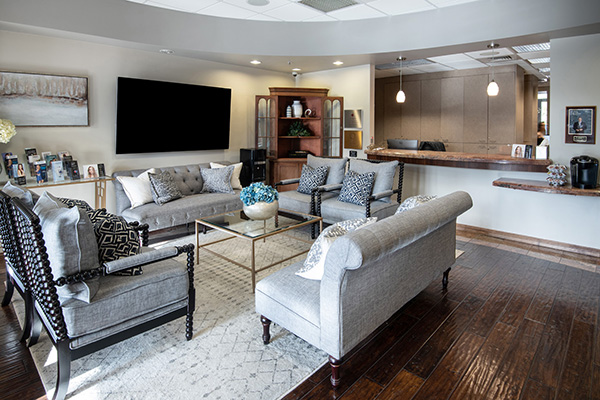
The Connection In Between Breathing Issues and Nose Job
Introduction
Rhinoplasty, typically referred to as a "nose surgery," is one of the most typical cosmetic treatments carried out worldwide. While many people seek nose surgery for aesthetic reasons, there exists a substantial overlap between cosmetic enhancements and practical enhancements, particularly concerning breathing problems. This post explores The Connection In between Breathing Issues and Rhinoplasty, exploring how surgical intervention can minimize respiratory problems while improving one's appearance.
The Connection In between Breathing Issues and Rhinoplasty
Breathing problems can originate from different physiological problems within the nasal passages. Some common concerns consist of a deviated septum, enlarged turbinates, or nasal polyps. Oftentimes, these structural abnormalities not just prevent airflow but also affect the general quality of life. By attending to these underlying issues through nose job surgical treatment, patients can experience not just enhanced visual appeals however likewise boosted breathing function.
Understanding Nose surgery Surgery
Rhinoplasty surgical treatment involves improving the nose to attain desired visual results, correct functional impairments, or both. The procedure normally lasts 1 to 3 hours and can be performed under basic anesthesia or regional anesthesia with sedation. Patients typically require a recovery duration of about one to 2 weeks.
Types of Rhinoplasty Procedures
- Open Rhinoplasty: Includes an external incision across the columella (the tissue separating the nostrils).
- Closed Rhinoplasty: Cuts are made inside the nostrils, leaving no visible scars.
Both techniques have their benefits and disadvantages depending upon individual needs.
Why Do People Experience Breathing Issues?
Breathing difficulties can arise from different causes:
Understanding these conditions is essential for figuring out whether rhinoplasty is an appropriate solution.
How Does Nose surgery Address Breathing Issues?
Rhinoplasty can substantially improve airflow by remedying structural deformities. For example:
- Straightening a deviated septum opens air passages.
- Reducing bigger turbinates allows for simpler breathing.
Many patients report remedy for chronic blockage post-surgery, highlighting nose surgery's double role as both a practical and cosmetic procedure.
The Function of Functional Rhinoplasty
Functional nose surgery specifically concentrates on enhancing nasal airflow rather than visual changes. This method is invaluable for clients who suffer from persistent breathing difficulties caused by structural issues in their noses.
Indications for Functional Rhinoplasty
Patients may think about practical nose surgery if they experience:
- Frequent sinus infections
- Obstructive sleep apnea
- Difficulty sleeping due to breathing interruptions
Functional nose jobs often integrate strategies used in traditional plastic surgeries with those aimed at alleviating specific breathing issues.
Rhinoplasty Cost: What to Expect
Understanding nose surgery costs is essential when considering this procedure. Factors influencing costs consist of:

- Geographic location
- Surgeon's experience
- Complexity of the procedure
On average, patients may expect to pay anywhere from $5,000 to $15,000 for nose job surgical treatment. This range encompasses both cosmetic and practical aspects of the procedure.
Insurance Protection for Rhinoplasty
Many insurance coverage prepares cover practical nose jobs if they are deemed medically needed. Nevertheless, purely cosmetic treatments are generally not covered.
Preparing for Your Rhinoplasty Procedure
Preparation plays a crucial function in guaranteeing a smooth surgical process. Here are some important actions:
Post-Surgical Care Following Rhinoplasty
Post-operative care is critical in promoting healing and accomplishing desired results:
- Avoid strenuous activities for numerous weeks.
- Keep your head raised throughout sleep.
- Attend follow-up visits as scheduled.
Following these recommendations will help make sure optimum healing and fulfillment with your results.
Patient Experiences with Breathing Improvements Post-Rhinoplasty
Numerous client testimonials highlight considerable enhancements in lifestyle following rhinoplastic procedures targeted at solving breathing problems:
"I never ever understood just how much I was missing out on till I could breathe freely once again after my surgery." - A pleased patient

This statement reflects a common sentiment among individuals who undergo rhinoplasties mostly for functional reasons instead of simply cosmetic ones.
Potential Dangers Connected with Rhinoplasty Surgery
Like any surgery, rhinoplasties include potential threats that clients must understand:
Discussing these threats with your surgeon prior to undergoing surgical treatment will assist set sensible expectations moving forward.
FAQs About The Connection In Between Breathing Issues and Rhinoplasty
1. What is rhinoplasty?
Rhinoplasty is a surgery developed to reshape the nose for either cosmetic or functional purposes.
2. Can I eliminate my breathing problems through rhinoplasty?
Yes! Many individuals find remedy for breathing issues connected to structural problems after undergoing this surgery.
3. For how long does recovery take after a rhinoplastic procedure?
Most clients require about one to two weeks for preliminary healing however might continue experiencing swelling for several months afterward.
4. Will my insurance coverage cover the cost of my surgery?
If your surgery addresses medical concerns like obstructive sleep apnea or persistent sinus problems, insurance coverage may offer coverage; nevertheless, purely cosmetic treatments generally aren't covered.
5. Exist different types of rhinoplasties?
Yes, open and closed techniques exist depending on specific needs and anatomical considerations.
6. What need to I expect during my initial consultation?
During your consultation, you'll discuss your medical history, aesthetic goals, and any concerns related to breathing before establishing a customized treatment plan with your surgeon.
Conclusion
In summary, comprehending The Connection rhinoplasty recovery time In between Breathing Issues and Rhinoplasty clarify how this complex surgical method serves both aesthetic desires and important medical requirements efficiently. Whether it's dealing with a deviated septum or refining one's appearance through mindful reshaping methods, rhinoplasty's benefits extend far beyond what meets the eye-- or rather what's taken in through it! As more people explore their alternatives regarding nasal surgical treatment-- whether driven by requirement or desire-- the value of notified decision-making stays vital in accomplishing effective outcomes that enhance both function and kind alike.
This article offers insight into how essential it is for anybody considering this type of treatment-- whether encouraged by appearances or lung capability-- to engage thoroughly in conversations with qualified specialists about their special circumstances before proceeding!